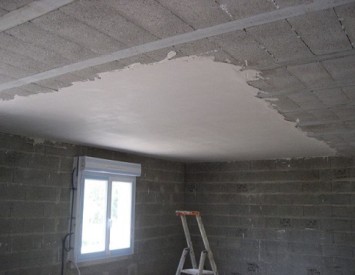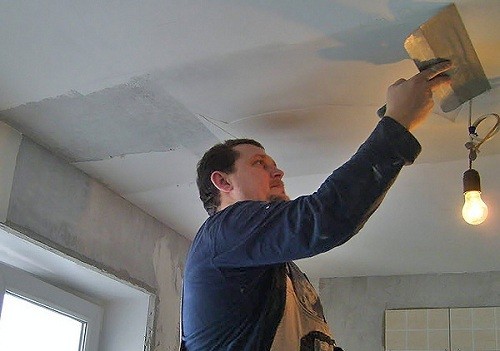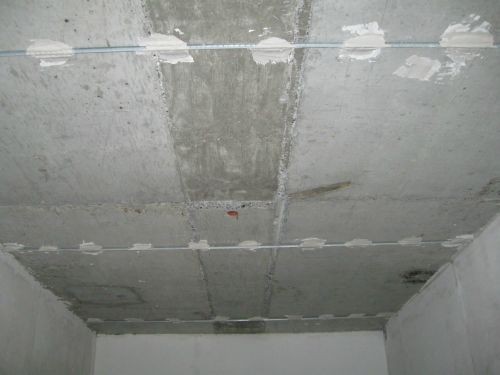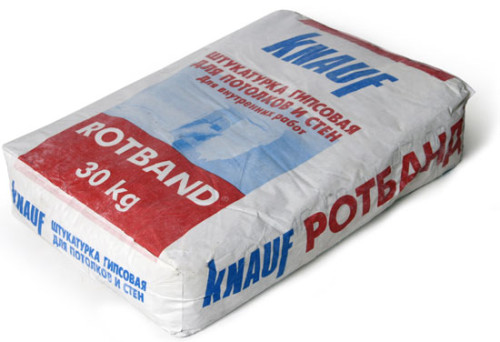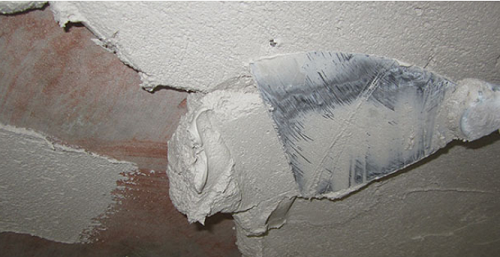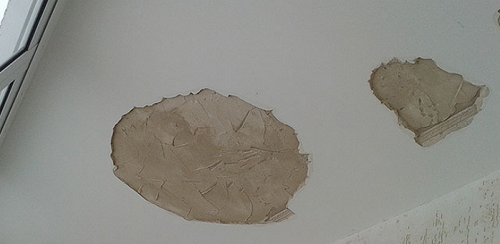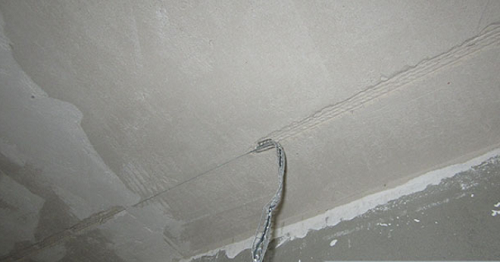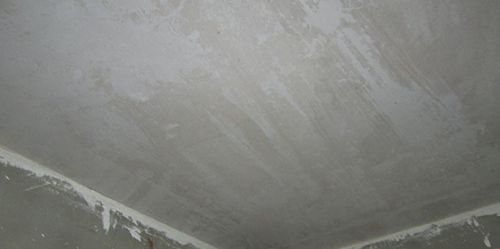Working with the ceiling surface is the most time -consuming and specific, and therefore many prefer to get rid of “low blood” - stick ceiling plates or close everything with a stretch fabric. However, there are cases when you can’t do without plastering, and here everything is far from as simple as with walls. In this article you will learn everything about the plaster of the ceiling with your own hands.
Content
Plaster the ceiling or not?
Few people know, but repairs in any room should start with the ceiling, especially when it comes to plaster work. There are a lot of decoration methods, but for almost all of them it is necessary to carry out preparatory work, namely, alignment by plastering and grouting.
Due to the high labor intensity and high cost of work, many doubt the need for its implementation. So, the cost of plaster in the ceiling, taking into account the purchase of mixtures, their transportation and work itself, will be higher than the arrangement of the stretch fabric or gluing ceiling plates. But before making the final verdict, consider the advantages and disadvantages of this method.
The advantages of the ceiling plaster:
- The cost of the mixtures themselves will be lower than the purchase of a stretch fabric or cassettes.
- Plastering mixtures are absolutely safe for human health and the environment.
- The plaster practically does not reduce the height of the room - we are talking about several centimeters (5 cm maximum), which can not be said about stretch or suspended ceilings.
It turns out that this is a rather inexpensive and safe way to repair the ceiling, but some nuances should be taken into account. For example, if the mixtures for decoration are cheap, then the work of a master who knows how to handle them will cost a tidy amount. The price of the ceiling plaster will be higher than if you ordered a suspended PVC ceiling. Another point - plaster is able to cope with only small differences in height up to 5 cm. If you put a thicker layer of the mixture, it will simply fall off under its own weight, and the consumption of the materials will be significantly higher, not to mention the fact that a piece of dumped plaster can Seriously spoil the health of residents.
And, the most important factor that does not allow many economical owners to decide on the plaster of the ceiling - to obtain a high -quality result, professional work skills are needed. To do this, it is recommended to practice working with a spatula first on the walls, and then on the ceiling in some small room. Only when you get a perfectly flat surface, you can proceed to repair in spacious rooms.
Video about the plaster of the ceiling below demonstrates the main points of work:
Work technology
It is so difficult to work with the ceiling due to the fact that everything has to be done “upside down” in an uncomfortable position, while the solution is constantly striving to drop directly into the eyes. That is why the whole process should be divided into several stages and clearly adhere to the instructions described below.
Testing and primer ceiling
Any construction and repair work must begin with preparation and markings in order to clearly understand the sequence of their actions and represent the final result. The alignment of the ceiling, like aligning the walls, occurs according to the beacons - special marks indicating the level (horizontal or vertical) to which the surface needs to be removed. In the case of ceilings, beacons are recommended to be exposed in the light. If you work in a corner room with two windows, put the lighthouses along. So you will have more likely to avoid differences, which often happens when 3 rows of lighthouses are exposed, and the average is lower. And to expose the lighthouses across and does not make sense at all, since the result will upset you.
The number of rows of lighthouses depends on the width of the room - if it is less than 3 m, you can do it quite in two rows, placing them 60 cm from the walls. As a result, the distance between the beacons will turn out to be 180 cm, which is quite enough for work by a long two -meter rule. First, the plaster is applied to the middle row, and then the side is removed under it. For wider rooms for 3-5 m, 3 beacons are required, and so on. We will consider an example of aligning the ceiling with a width of 3.5 m, so it took 3 beacons: in the center of the ceiling and 20 cm from the walls. The length of the first row of each of the lighthouses should be slightly less than the length of the construction rule, that is, 2-2.5 m. The length of the second row can be done as it turns out.
How to prepare the ceiling for plaster:
- Mark the marking with a simple pencil at the points where self -tapping screws will be located. It is better to immediately write on the ceiling the sizes of lighthouses, so as not to measure them every time. Make the marking holes with a perforator and drive the dowels there.
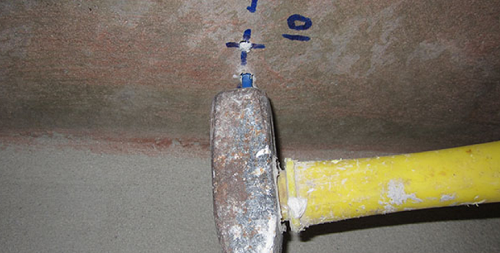
- Do not screw the screws yet - first you need to apply a primer. Since the surface of the draft ceiling is concrete and smooth, the primer is needed such that it can stand efficiently and tightly. One of the optimal options for such cases is concrete contact. Apply the mixture generously in several layers, allowing the previous layer to dry.
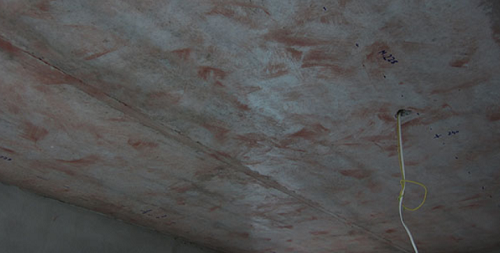
- After completely drying the primer, determine the lower point of the ceiling surface. To do this, it is most convenient to use a laser level and a square (roulette). Hang the level on the wall as high as possible, let the beam and see what mark it will highlight on a square or roulette.
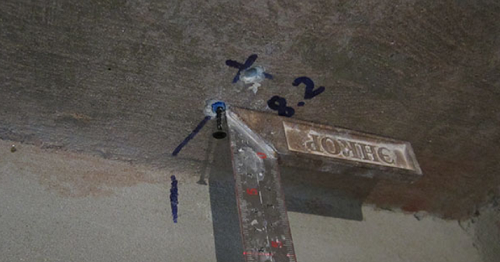
- If you did not find a laser level, you can take the usual bubble. To do this, the level must be glued to the long rule with tape. Start measuring from any corner, from time to time making notes near the holes for self -tapping screws. The work will take quite a lot of time and will require patience, but without it you will not be able to get an even surface. Your task is to find a point where the layer of plaster will be minimal, and if at least a little mistake, either too many mixtures will be spent, or even worse, during the work you will reproach with the black ceiling, and all the work will go down the drain. As you understand, in order to cope with such a task, you must be able to handle measuring instruments.
- So, when you were able to calculate from which self-tapping screw the lowest segment of the ceiling will begin, screw it so that it is not twisted to the surface of 6-7 mm. This distance will be the standard thickness of the plastering lighthouse. The rest of the screws, respectively, should be undercurled even more, that is, to protrude stronger beyond the surface of the ceiling.
- Scroll the second self -cut “by eye”, and then attach the rule between it and the first self -tapping screw. Check the horizontal with the construction level and adjust (screw or twist the second self -tapping screw) so that you go into a flat horizontal plane.
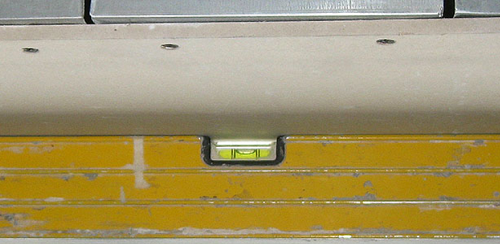
- Do the same procedure with the second and third self -tapping screw, and so on. Periodically check the levels between different pairs of self -tapping screws, and not just between neighboring ones - you will be sure that you have not allowed a minimum deviation, which ultimately can develop into a large difference in height. If you work with a bubble level, the process of installing beacons will take about 2 hours or longer. An experienced master will spend 1-1.5 hours on this. But with a laser level, the thing will go much faster, so if it is possible to borrow it or rent it, do it.
Application of plaster on the ceiling
Before proceeding with step -by -step instructions, I would like to draw your attention to one important point. Everyone has heard about the high quality of German building mixtures, especially Rotband plaster. However, not even all experts know that the maximum permissible thickness of the layer of such plaster can only be 1.5 cm, while in any case, everything can fall off in any case. Thus, if the high -altitude surface difference is more than 9 mm, you cannot plastered with a mouthband. The fact is that domestic and European construction standards are very different, and we feel good if you can meet 3 cm of plaster.
In general, in the process of applying plaster there is nothing complicated - he smeared it to the surface, handed it to the rule and took off all the excess. But in the case of the ceiling, there are subtleties. So, it is better for him to make a thicker solution, otherwise it will be all on you and on the floor. But you can’t do too cool the mixture, because it simply cannot stick to the ceiling. Since in this case gravity works against you, it is best to choose the technology of applying plaster depending on the required layer thickness. It is convenient to work with a steel ironing iron if you need to apply a thin layer of up to 15 mm - put the mixture with a slide and transfer it to the ceiling by moving forward and upward. If you need a layer thicker, use a simple spatula.
An important point: the thicker the layer of plaster, the greater the likelihood of the formation of air bubbles in it. In these places, the solution does not adhere to the ceiling and sags, thereby reducing the strength and durability of the entire coating. The most common risk zones are in the corners between the wall and the ceiling. In order to prevent sagging, some professionals use construction cunning - first apply a thin layer of solution, wait for its drying, and only then put the main thickness. The first thin layer and provides high -quality adhesion of the plaster with a black ceiling. The interval between the application of the first and second layer should be no more than 30 minutes. - The first layer should only dry slightly. Otherwise, the consistency of the layers will be too diverse, and the bulk can fall off.
In the photo, just such a situation is demonstrated above - the first thin layer is perfectly preserved and holds well on the ceiling, while the thicker mass fell off. If, after completing the work and drying of the plaster, you still discovered bubbles or cracks, this can be fixed. We will have to scrap the plaster with a spatula to the very base, and then put the solution again in this place.
Specific moments of ceiling plaster:
- It is best to start work with your back to the window, moving towards it. So the light will not blind your eyes, but you will see everything with full -fledged natural light.
- Remove the excess solution, moving the ironer or the rule on yourself, and the last (finish) movement by the rule always lead in the opposite direction from the window. So you can consider defects in the work and correct them immediately.
- Constantly check the plane along the beacons after each mixing of the solution to exclude situations when the layer enters the layer. Fixing then it will not be easy. Also, after each portion of the solution, “cut” the edges, as shown in the image below.
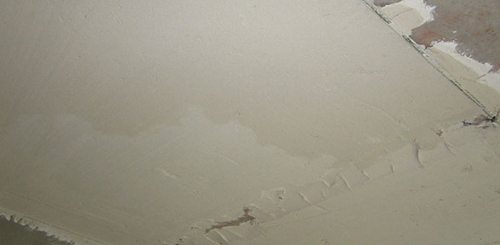
- The remaining unicelled strips along the walls and along the axes of the central screws must be closed after grasping the main plane. Before proceeding with this, unscrew all the screws so that the rule does not catch on them and they were not visible after the grout.
- After leveling, do not forget to remove all the beacons. It remains only to close up and level the grooves from them, and you can proceed to the final stage - grout.
Ceiling grout
If you dealt with the alignment of the ceiling, the grout will seem to you a trifle business. To do this, dilute the plaster solution and apply it with a thin layer on an area of \u200b\u200babout 1 m². Do not immediately smear it with pressure, otherwise you will get a tuberous ugly coating. Just wait a couple of minutes so that the moisture from the solution is slightly absorbed into the frozen plaster, and then gently heat it. You can experiment with fresh and “two -minute” plaster to see how much the result is different.
When the solution grasps properly, finally “polish” it to get a perfectly smooth surface. After the grout, a qualitatively plastered ceiling looks something like this:
As you can see, plaster in the ceiling is a rather specific idea. The very idea attracts the opportunity to make cheap and high -quality repairs, but at the same time scares with the complexity and need to own special skills. Therefore, before deciding on independent plaster, soberly appreciate your capabilities.
Summarizes the above material useful video about the plaster of the ceiling with your own hands:
